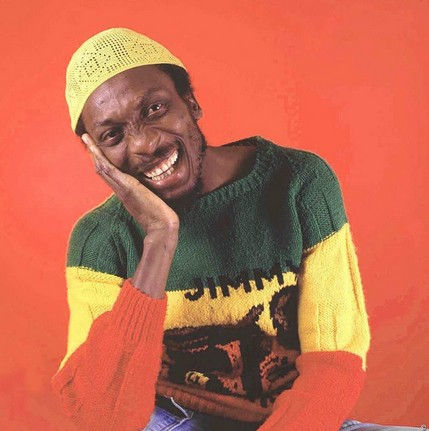The History and Significance of Eid al-Fitr and Eid al-Adha: A Deep Dive into Muslim Festivals
- orpmarketing
- Jun 4
- 4 min read

With the Muslim festival season approaching, it’s the perfect time to explore the rich history, profound significance, and cherished beliefs behind the two major Islamic celebrations: Eid al-Fitr and Eid al-Adha. These festivals, rooted in centuries of tradition, bring Muslims worldwide together in joy, reflection, and devotion. Let’s unpack their origins, meanings, and why they matter so much to over a billion people.
Eid al-Fitr: The Festival of Breaking the Fast
A Brief History
Eid al-Fitr, often just called Eid, marks the end of Ramadan, the holy month of fasting. Its origins trace back to 624 CE in Medina, when the Prophet Muhammad established the celebration after the Battle of Badr, a pivotal moment for the early Muslim community. The festival was a way to give thanks for the strength and guidance provided during Ramadan, a month of fasting from dawn to dusk, spiritual reflection, and self-discipline.
The word "Fitr" comes from the Arabic root meaning "to break" or "to open," signifying the breaking of the fast. It’s celebrated on the first day of Shawwal, the tenth month of the Islamic lunar calendar, once the new moon is sighted. (Fun fact: moon-sighting can spark lively debates in communities, with some relying on local sightings and others on global announcements!)
Significance and Beliefs
Eid al-Fitr is all about gratitude and renewal. Muslims believe fasting during Ramadan purifies the soul, strengthens their connection to Allah, and fosters empathy for those less fortunate. The festival is a joyful reward for a month of devotion—a time to celebrate with family, friends, and community.
One key practice is Zakat al-Fitr, a mandatory charity given before the Eid prayer. It’s typically a small amount of food or money donated to ensure everyone, especially the poor, can join in the festivities. This reflects the Islamic emphasis on compassion and social equity. The Eid prayer itself, held in large congregations, symbolizes unity and equality, as people from all walks of life stand shoulder-to-shoulder in worship.
Traditions
Picture this: families decked out in their finest clothes (often new outfits, because who doesn’t love a fresh look?), homes filled with the aroma of sweets like baklava or sheer khurma, and kids running around with envelopes of Eidi (cash gifts). The day starts with the Eid prayer, followed by feasts, visits to relatives, and exchanging greetings of “Eid Mubarak” (Blessed Eid). It’s a vibe—joyful, warm, and deeply communal.
Eid al-Adha: The Festival of Sacrifice
A Brief History
Eid al-Adha, or the "Greater Eid," commemorates the story of Prophet Ibrahim’s (Abraham’s) willingness to sacrifice his son in obedience to God’s command. According to Islamic tradition, this event took place around 2000 BCE, though exact dates are tough to pin down. As the story goes, Allah tested Ibrahim’s faith by asking him to sacrifice his son (Isma’il in Islamic tradition). At the last moment, Allah provided a ram to sacrifice instead, rewarding Ibrahim’s unwavering devotion.
This festival, celebrated on the 10th day of Dhul-Hijjah, the final month of the Islamic calendar, coincides with the culmination of the Hajj pilgrimage to Mecca. Its roots are ancient, tying into the shared Abrahamic heritage of Islam, Judaism, and Christianity, but it was formalized as a Muslim festival by the Prophet Muhammad in the 7th century CE.
Significance and Beliefs
Eid al-Adha is a profound reminder of sacrifice, submission, and trust in Allah. Muslims believe Ibrahim’s story teaches the importance of surrendering one’s will to God, even when it’s tough—really tough. It’s not just about the act of sacrifice but the intention behind it: prioritizing faith and selflessness over personal desires.
The central ritual is the Qurbani, or animal sacrifice, where a sheep, goat, cow, or camel is slaughtered in a halal manner. The meat is divided into three parts: one for the family, one for friends and relatives, and one for the poor. This practice underscores charity and community, ensuring no one goes hungry during the celebration. (I remember a friend describing the chaotic joy of distributing meat in her neighborhood—everyone’s involved, from kids to grandparents!)
Traditions
Eid al-Adha has a more solemn tone than Eid al-Fitr but is no less vibrant. It begins with the Eid prayer, followed by the Qurbani. Families share meals featuring the sacrificed meat, often prepared in rich dishes like biryani or kebabs. The festival lasts up to four days, with visits to loved ones and reflections on the Hajj, which millions undertake simultaneously in Mecca. It’s a time to reconnect with faith and family, often with stories of Ibrahim’s trial sparking deep conversations.
Why These Festivals Matter
Both Eids are more than just holidays—they’re spiritual anchors. Eid al-Fitr celebrates the triumph of self-discipline and gratitude, while Eid al-Adha honors sacrifice and submission. Together, they reinforce core Islamic values: faith, charity, community, and humility. They’re also a chance to hit reset, strengthen bonds, and share joy (and food—lots of food).
In a world that can feel divided, these festivals remind Muslims to look out for one another, especially the marginalized. They’re universal in their appeal, too. Who can’t relate to the idea of coming together after a challenge (Eid al-Fitr) or making sacrifices for something bigger than yourself (Eid al-Adha)?
Wrapping Up
As Eid approaches, Muslims worldwide are gearing up for these beautiful celebrations. Whether it’s the sweet-soaked joy of Eid al-Fitr or the reflective sacrifice of Eid al-Adha, these festivals carry centuries of history and meaning. They’re a time to pause, connect, and celebrate what matters most—faith, family, and community. So, if you’re invited to an Eid gathering, go! You’ll probably leave with a full stomach and a warm heart.
What’s your favorite festival tradition? Drop a comment below and share this post to spread the love!




Comments